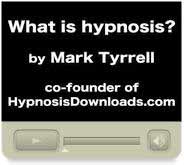Understanding How Hypnosis Works While Sleeping
Hypnosis is a state of focused attention and increased suggestibility, often used for therapeutic purposes. While traditionally practiced in a wakeful state, the concept of hypnosis while sleeping, or “sleep hypnosis,” has garnered interest for its potential to influence the subconscious mind during the sleep cycle. This article delves into the mechanisms of hypnosis, the sleep cycle, and how sleep hypnosis might work to benefit individuals in various ways.
What is Hypnosis?
Hypnosis is a trance-like state characterized by focused attention, deep relaxation, and heightened suggestibility. During hypnosis, an individual is more open to suggestions, which can be used to promote positive changes in behavior, thought patterns, and emotions. Hypnotherapy, the therapeutic use of hypnosis, is employed to address a range of issues, including stress, anxiety, pain management, and habit modification.
The Sleep Cycle
To understand sleep hypnosis, it is essential to grasp the basics of the sleep cycle. Sleep is divided into two main types: Rapid Eye Movement (REM) sleep and Non-Rapid Eye Movement (NREM) sleep. NREM sleep is further divided into three stages:
- Stage 1 (N1): The lightest stage of sleep, characterized by drowsiness and the transition from wakefulness to sleep.
- Stage 2 (N2): A deeper stage of light sleep where the body prepares for deep sleep. Heart rate slows, and body temperature drops.
- Stage 3 (N3): Also known as deep or slow-wave sleep, this stage is crucial for physical and mental restoration.
REM sleep is the stage where dreaming occurs and is essential for emotional regulation and memory consolidation. The sleep cycle repeats several times throughout the night, with each cycle lasting approximately 90 minutes.
How Hypnosis Works During Sleep
Sleep hypnosis aims to leverage the brain’s activity during sleep to influence the subconscious mind positively. The process typically involves listening to audio recordings or guided hypnosis sessions designed to induce a trance-like state and deliver therapeutic suggestions. Here’s how it works:
- Pre-Sleep Induction:
- The individual listens to a hypnosis recording before falling asleep. This recording often includes calming music, soothing voice guidance, and specific suggestions for relaxation and positive change.
- The induction phase helps the individual transition from a wakeful state to a relaxed, drowsy state, making them more receptive to suggestions.
- Subconscious Engagement During Sleep:
- Once the individual falls asleep, the brain continues to process auditory information. Although conscious awareness decreases, the subconscious mind remains active.
- Hypnosis recordings often play throughout the night or for a specific duration, ensuring that therapeutic suggestions are continuously delivered.
- Integration of Suggestions:
- The repeated exposure to positive suggestions during sleep can reinforce desired behaviors, attitudes, and emotional responses.
- The brain’s natural processes during sleep, such as memory consolidation and emotional regulation, may enhance the integration of these suggestions into the individual’s subconscious mind.
Benefits of Sleep Hypnosis
Sleep hypnosis can offer several potential benefits:
- Improved Sleep Quality:
- Hypnosis recordings often include suggestions for deep relaxation and stress reduction, which can help individuals fall asleep faster and enjoy more restful sleep.
- Habit Modification:
- Positive suggestions can target specific habits, such as smoking cessation, weight loss, or reducing alcohol consumption, promoting lasting behavioral changes.
- Stress and Anxiety Reduction:
- Sleep hypnosis can help alleviate stress and anxiety by promoting a sense of calm and relaxation, both during the induction phase and throughout the night.
- Enhanced Emotional Well-Being:
- Positive affirmations and suggestions can improve self-esteem, confidence, and overall emotional health.
- Pain Management:
- Hypnosis can help reduce the perception of pain and discomfort, providing relief for chronic pain conditions.
Limitations and Considerations
While sleep hypnosis has potential benefits, it is essential to consider its limitations and use it as a complementary approach rather than a standalone solution:
- Individual Variability:
- The effectiveness of sleep hypnosis can vary widely among individuals. Factors such as suggestibility, openness to hypnosis, and the specific nature of the issue being addressed can influence outcomes.
- Professional Guidance:
- For serious mental health or medical conditions, it is crucial to seek professional guidance. Sleep hypnosis should not replace traditional medical or psychological treatment.
- Quality of Hypnosis Recordings:
- The effectiveness of sleep hypnosis can depend on the quality and content of the recordings. Choosing recordings from reputable sources and professionals can enhance the likelihood of positive results.
Conclusion
Sleep hypnosis offers a unique and promising approach to leveraging the brain’s natural processes during sleep to influence the subconscious mind positively. By understanding the mechanisms of hypnosis and the sleep cycle, individuals can explore the potential benefits of sleep hypnosis for improving sleep quality, modifying habits, reducing stress and anxiety, and enhancing overall well-being. As with any therapeutic approach, it is essential to approach sleep hypnosis with an open mind, realistic expectations, and a willingness to seek professional guidance when necessary.
